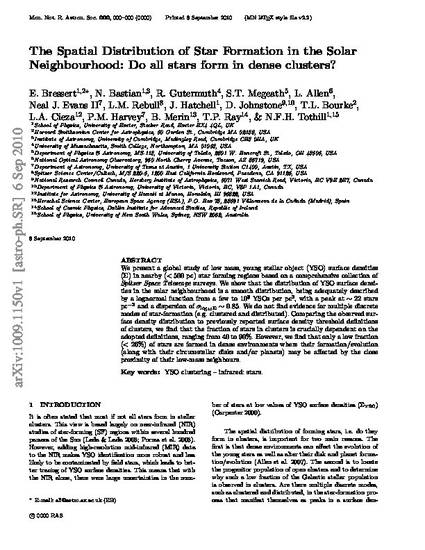
We present a global study of low-mass, young stellar object (YSO) surface densities (Σ) in nearby (<500 >pc) star-forming regions based on a comprehensive collection of Spitzer Space Telescope surveys. We show that the distribution of YSO surface densities in the solar neighbourhood is a smooth distribution, being adequately described by a lognormal function from a few to 103 YSOs pc−2, with a peak at ∼22 stars pc−2 and a dispersion of inline image. We do not find evidence for multiple discrete modes of star formation (e.g. clustered and distributed). Comparing the observed surface density distribution to previously reported surface density threshold definitions of clusters, we find that the fraction of stars in clusters is crucially dependent on the adopted definitions, ranging from 40 to 90 per cent. However, we find that only a low fraction (<26 per>cent) of stars are formed in dense environments where their formation/evolution (along with their circumstellar discs and/or planets) may be affected by the close proximity of their low-mass neighbours.
Available at: http://works.bepress.com/r_gutermuth/5/
